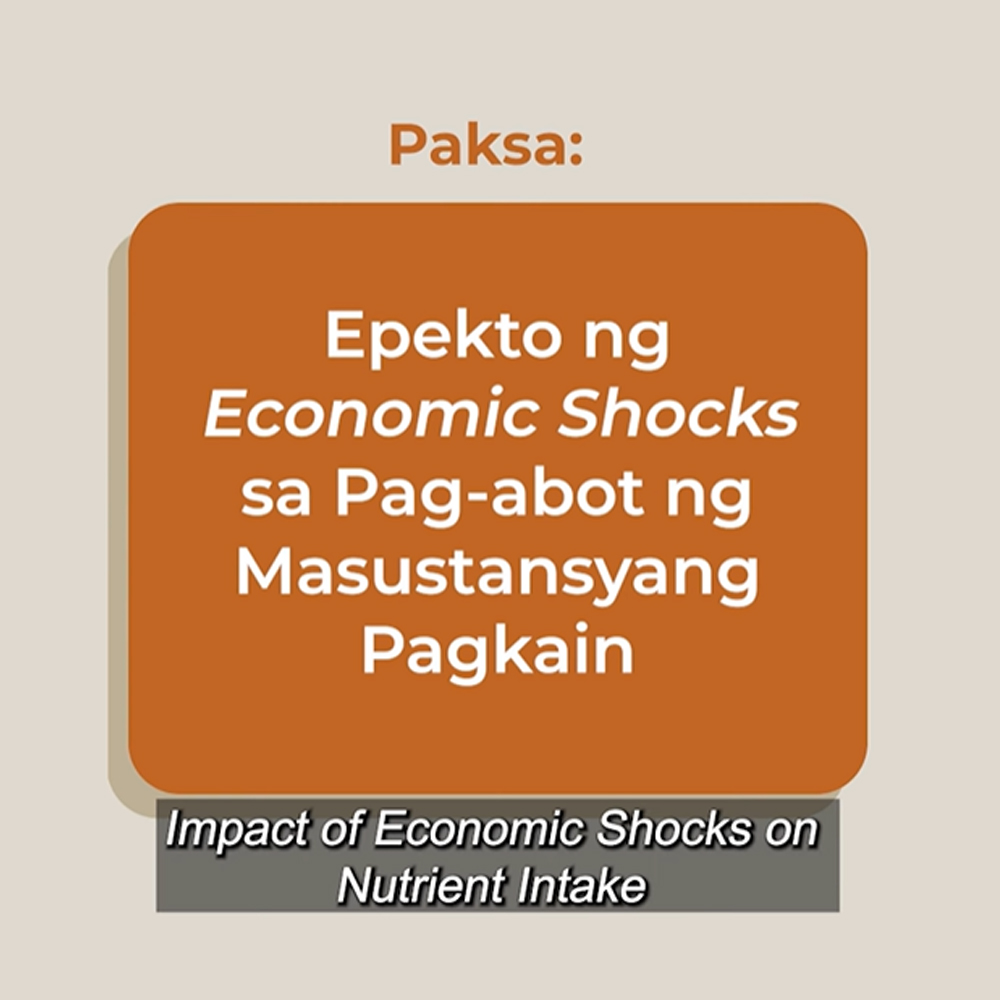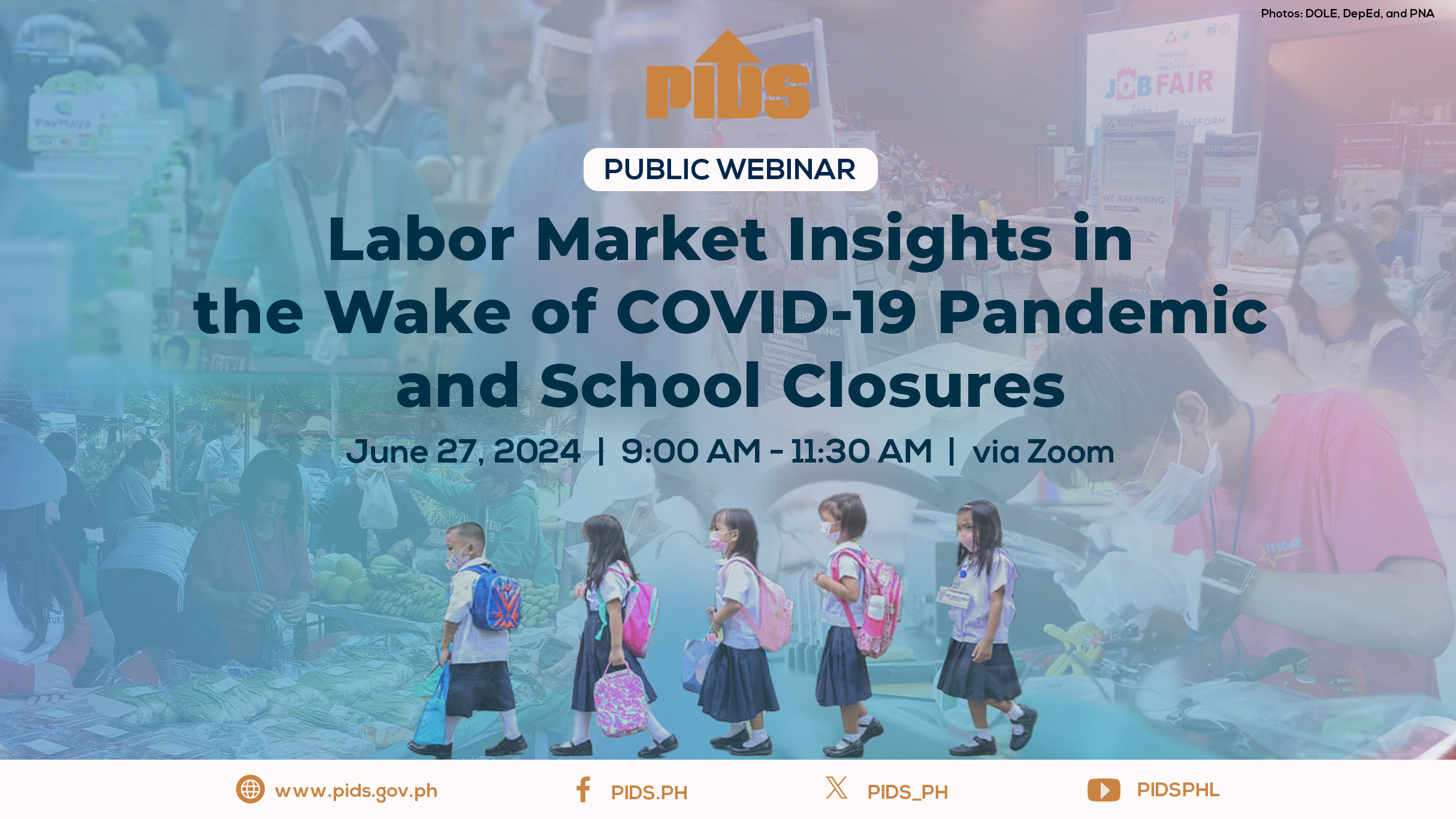The coronavirus pandemic’s impact on the economy could lead to 1.5 million Filipinos becoming poor, according to the Philippine Institute for Development Studies (PIDS) in an August 2020 study.
“The government and all Filipinos should ensure that the poor are at the center of policy attention, especially given all the reduced economic activities from COVID-19 and the likely undercounts of COVID-19 infection among the poor, who do not have the luxury to seek health care, and for whom ‘washing hands’ is also a luxury,” the report said.
Released in the first week of August, the study made its projections based on scenarios and assumptions, as the exact impact of COVID-19 on poverty is not available at this time.
According to the study, in a scenario where everyone is on the receiving end of a 10% decrease in their income, the number of poor Filipinos can increase by 5.5 million.
However, since the government has social protection programs in place such as the emergency subsidy program (ESP) and the small business wage subsidies (SBWS), the projected increase of poor Filipinos lowered to 1.5 million instead.
Why this matters: Throughout the coronavirus pandemic in the Philippines, citizens have been seen rallying for help and begging for alms on the street. The Department of Social Welfare and Development (DSWD), the ESP's lead implementer, has met criticism on its implementation of the program. Many Filipinos can still be seen commenting on DSWD's social media posts, following up on aid or asking to be included in the program.
The Philippines is now in recession as the economy shrank by 16.5% in the 2nd quarter of 2020 – the sharpest drop ever on record, according to the Philippine Statistics Authority. (FAST FACTS: What is recession?)
Projected poverty impact
PIDS estimated the impact of COVID-19 on poverty in the Philippines by simulating low, medium, and high contractions of 5%, 10%, and 20% respectively of the entire income distribution. This allows us to see scenarios wherein everyone's incomes are decreased by those percentages.
The study uses the food poverty and total poverty lines in 2018 data as the baselines – 5.3% and 16.8% respectively. A poverty line is the standard of the government in naming who are poor based on their household income.
According to PIDS senior research fellow Jose Ramon Albert, a household is considered "poor" if it spends less than P2,200 ($44) per person a month. Meanwhile, when a household spends less than P1,540 ($31) per person a month, then it is "food poor" or "extremely poor."
From 5.3%, the proportion of extremely poor Filipinos can increase by 1.1% if everyone’s incomes decrease by 5%. If the ESP and SBWS are completed in this setting, the extreme poverty incidence would drop to 4.4%. This is the only situation on PIDS' projections where there would be less poor Filipinos after the pandemic, supposing there is an equal income decrease for everyone.
Advertisement
At 10% income contraction, extremely poor Filipinos would increase by 2.4% without ESP and SBWS. If the programs were successful, food poverty would increase by only 0.3%.
In the worst case scenario that all incomes should decrease by 20%, extreme poverty incidence would more than double at 11.4%. But should the ESP and SBWS be successful, food poverty would increase by 3.5%.
It would also take years longer for low-income families to escape poverty.
“Under tougher conditions of income contractions of 20% with social protection cash assistance, we simulate that the average time for low income Filipinos to move up into middle income class would increase by 3 years from baseline figures,” the report said.
PIDS also acknowledged there are non-monetary poverty impacts of COVID-19 such as health (e.g. immunization coverage, malnutrition) and education.
Economic impact
International organizations’ prospects on the Philippines’ growth are at odds with each other.
The Asian Development Bank expects the economy to grow at 2% in 2020, while the International Monetary Fund projects a 0.6% increase this year.
However, the World Bank projected growth in the Philippines to decline to 3% in the baseline, and further expects a -0.5% in the lower-case scenario in 2020, from 5.9% in 2019.
The National Economic and Development Authority (NEDA) slashed its GDP growth projections and is expecting 2020 to experience a growth fall between -0.6% and 4.3%.
NEDA also estimated a P767.18-billion worth of economic losses from Luzon’s 6-week enhanced community quarantine.
PIDS recommended that government must put more attention to investing in quality data, strengthening digitalization efforts and financial innovations, and improving education systems.
“The government and all Filipinos should ensure that the poor are at the center of policy attention, especially given all the reduced economic activities from COVID-19 and the likely undercounts of COVID-19 infection among the poor, who do not have the luxury to seek health care, and for whom ‘washing hands’ is also a luxury,” the report said.
Released in the first week of August, the study made its projections based on scenarios and assumptions, as the exact impact of COVID-19 on poverty is not available at this time.
According to the study, in a scenario where everyone is on the receiving end of a 10% decrease in their income, the number of poor Filipinos can increase by 5.5 million.
However, since the government has social protection programs in place such as the emergency subsidy program (ESP) and the small business wage subsidies (SBWS), the projected increase of poor Filipinos lowered to 1.5 million instead.
Why this matters: Throughout the coronavirus pandemic in the Philippines, citizens have been seen rallying for help and begging for alms on the street. The Department of Social Welfare and Development (DSWD), the ESP's lead implementer, has met criticism on its implementation of the program. Many Filipinos can still be seen commenting on DSWD's social media posts, following up on aid or asking to be included in the program.
The Philippines is now in recession as the economy shrank by 16.5% in the 2nd quarter of 2020 – the sharpest drop ever on record, according to the Philippine Statistics Authority. (FAST FACTS: What is recession?)
Projected poverty impact
PIDS estimated the impact of COVID-19 on poverty in the Philippines by simulating low, medium, and high contractions of 5%, 10%, and 20% respectively of the entire income distribution. This allows us to see scenarios wherein everyone's incomes are decreased by those percentages.
The study uses the food poverty and total poverty lines in 2018 data as the baselines – 5.3% and 16.8% respectively. A poverty line is the standard of the government in naming who are poor based on their household income.
According to PIDS senior research fellow Jose Ramon Albert, a household is considered "poor" if it spends less than P2,200 ($44) per person a month. Meanwhile, when a household spends less than P1,540 ($31) per person a month, then it is "food poor" or "extremely poor."
From 5.3%, the proportion of extremely poor Filipinos can increase by 1.1% if everyone’s incomes decrease by 5%. If the ESP and SBWS are completed in this setting, the extreme poverty incidence would drop to 4.4%. This is the only situation on PIDS' projections where there would be less poor Filipinos after the pandemic, supposing there is an equal income decrease for everyone.
Advertisement
At 10% income contraction, extremely poor Filipinos would increase by 2.4% without ESP and SBWS. If the programs were successful, food poverty would increase by only 0.3%.
In the worst case scenario that all incomes should decrease by 20%, extreme poverty incidence would more than double at 11.4%. But should the ESP and SBWS be successful, food poverty would increase by 3.5%.
It would also take years longer for low-income families to escape poverty.
“Under tougher conditions of income contractions of 20% with social protection cash assistance, we simulate that the average time for low income Filipinos to move up into middle income class would increase by 3 years from baseline figures,” the report said.
PIDS also acknowledged there are non-monetary poverty impacts of COVID-19 such as health (e.g. immunization coverage, malnutrition) and education.
Economic impact
International organizations’ prospects on the Philippines’ growth are at odds with each other.
The Asian Development Bank expects the economy to grow at 2% in 2020, while the International Monetary Fund projects a 0.6% increase this year.
However, the World Bank projected growth in the Philippines to decline to 3% in the baseline, and further expects a -0.5% in the lower-case scenario in 2020, from 5.9% in 2019.
The National Economic and Development Authority (NEDA) slashed its GDP growth projections and is expecting 2020 to experience a growth fall between -0.6% and 4.3%.
NEDA also estimated a P767.18-billion worth of economic losses from Luzon’s 6-week enhanced community quarantine.
PIDS recommended that government must put more attention to investing in quality data, strengthening digitalization efforts and financial innovations, and improving education systems.












